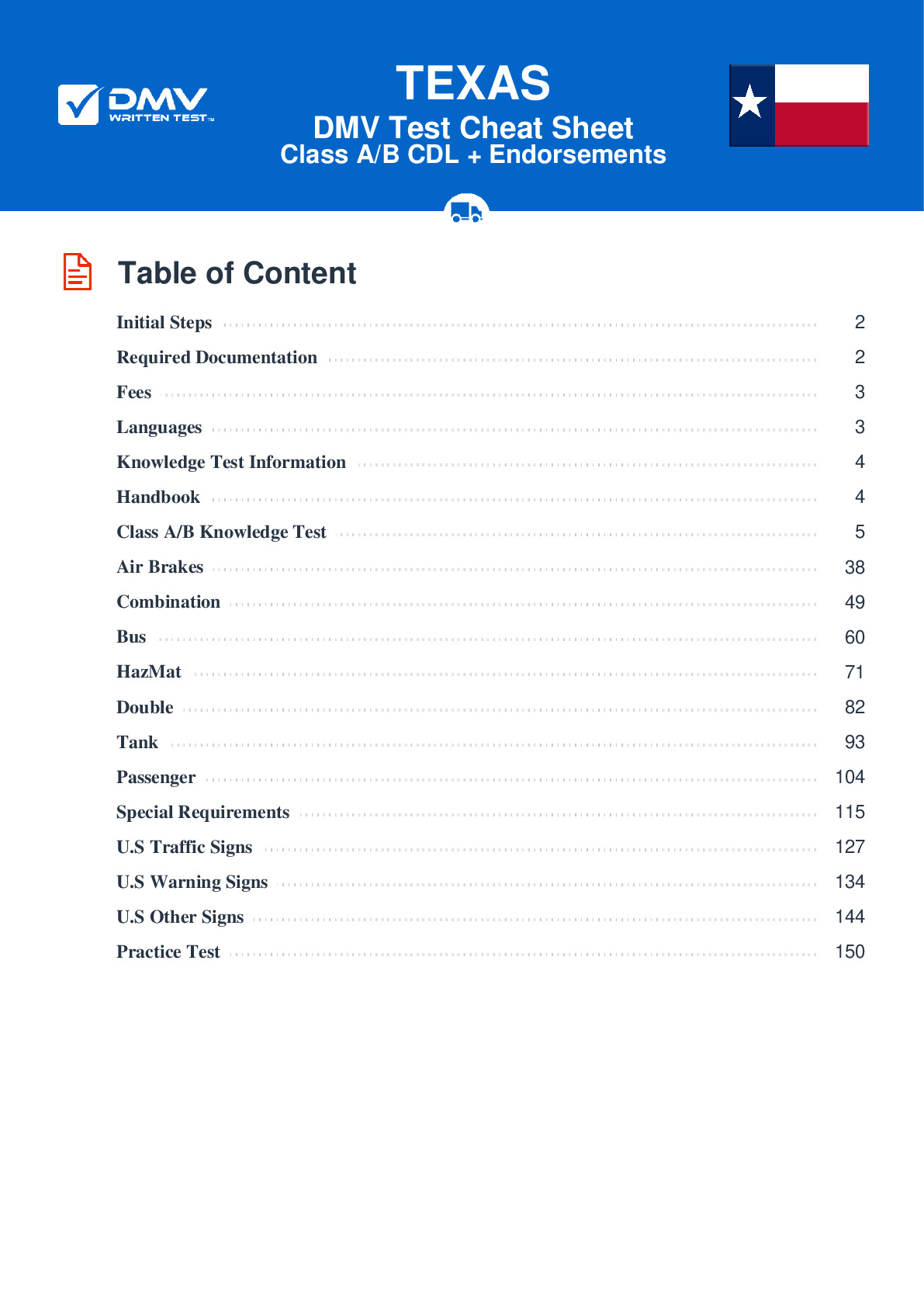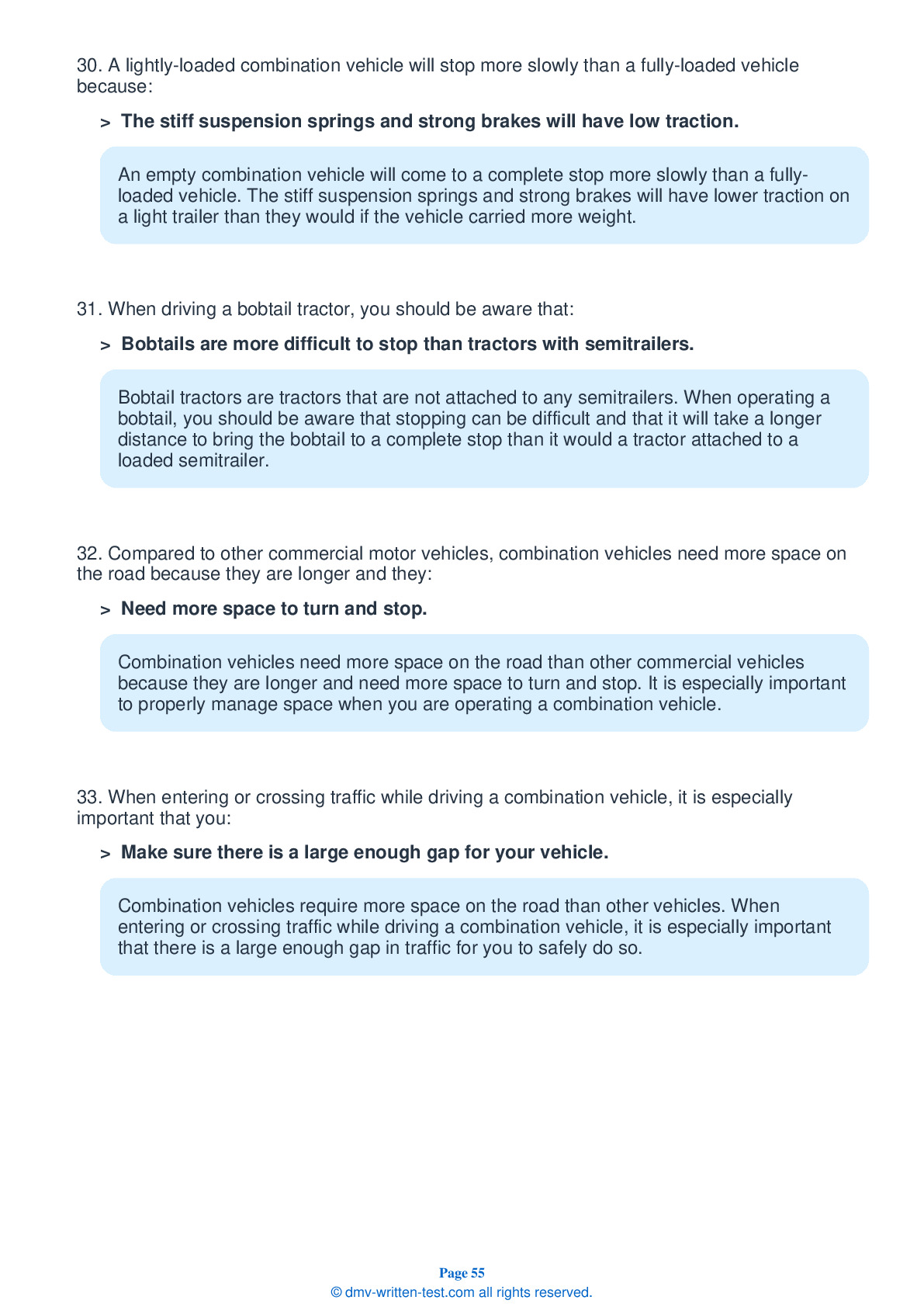Special Requirements
All CDL applicants in Texas must pass a Commercial Rules test before they will be permitted to take any other CDL application tests. The Commercial Rules test is based on the information found in Section 14 of the Texas Commercial Motor Vehicle Drivers Handbook. This section covers special requirements for CMV drivers in the state of Texas, including lighting requirements, size and weight restrictions, and rules to enhance a driver’s safety. The test is made up of 20 multiple-choice questions, and applicants will need to correctly answer a minimum of 16 questions to pass.
Number of Question
Passing Score
8. If you must make an emergency stop on the side of a roadway and your vision is obscured, you should place the first warning signal ____ behind your vehicle.
Explanation
When making an emergency stop on the side of any road, a warning signal should be placed 10 feet behind the vehicle. Depending on what the situation requires when your view is obstructed, you should also place a warning signal 100 feet in front of your vehicle and between 100 and 500 feet behind your vehicle.
9. Farm tractors and other vehicles using wheels with cleats, lugs, flanges, studs, or spikes are not permitted to operate:
Explanation
Farm tractors and other vehicles may not operate on highways if equipped with wheels using cleats, lugs, flanges, studs, or spikes. Wheels with extensions on the rims that could damage a road are also not permitted to be used on highways.
10. In Texas, a combination may be made up of no more than:
Explanation
In Texas, combinations may be made up of three or fewer vehicles. If traveling on the interstate, you should be aware of combination regulations for each state in which you will be driving.
11. Drive below the posted speed limit when:
Explanation
It is dangerous to drive at a speed too fast for conditions, regardless of the posted speed limit. Any time conditions are less than perfect, you should adjust your speed and following distance.
12. When passing, you should:
Explanation
When passing, you should keep as much space as possible between your vehicle and other vehicles. Be aware that your vehicle produces a buffer of wind that can be dangerous to smaller vehicles nearby.
13. Generally, the total width of a vehicle hauling a load may be no more than:
Explanation
Generally, the total width of a vehicle hauling a load may be no more than 102 inches. There are some exceptions to this regulation.
14. In general, when approaching a railroad grade crossing, a school bus driver should:
Explanation




